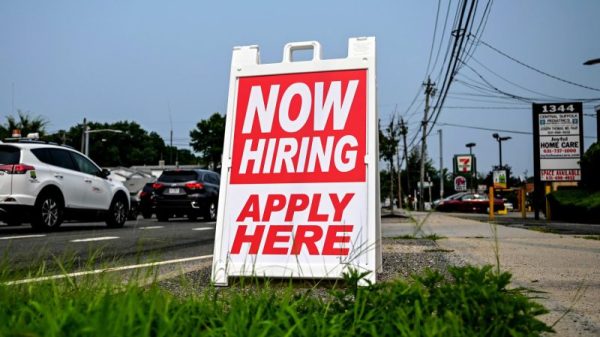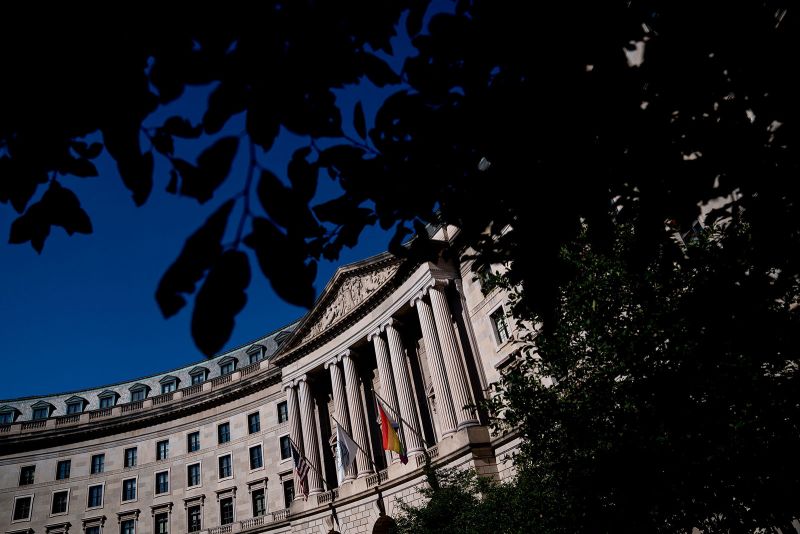President Joe Biden’s Environmental Protection Agency threw down a gauntlet on climate this spring, pushing carmakers toward electric vehicles, cracking down on natural gas leaks and forcing power plants to get their planet-warming pollution under control.
The new rules could prevent billions of tons of climate pollution from entering the atmosphere from America’s dirtiest industries – pollution that is rapidly warming the planet, spurring record heatwaves and supercharging storms.
But only if they can survive the nation’s highest court.
“There’s no question there’s high skepticism that many of the justices harbor about EPA’s rules and regulations,” he added.”
Over the last three years, the EPA has tried to Supreme Court-proof its rules, hewing as close to the law as it can get. The agency’s authority to regulate greenhouse gases from power plants was curbed – but not taken away entirely – in a 2022 case. Speaking to environmental journalists at a conference in April, EPA administrator Michael Regan said his staff is “very attentive” to how the Supreme Court “is responding.”
“We’re trying to now design more robust rules in response to the environment that we’re in,” Regan added.
The EPA is already facing legal challenges on nearly every major rule it has enacted, largely from Republican states and the fossil fuel industry. Now it is facing likely challenges from the same cast of characters on the EV and power plant regulations, in which any Supreme Court action could have global repercussions: The US is the world’s second-largest polluter behind China, and the EPA is the main agency setting and enforcing rules of the road for its dirtiest industries.
The EPA is attempting to thread the smallest of needles: write lasting regulations in a way that will survive a Supreme Court that multiple legal experts described as “hostile.”
The agency is “trying to avoid anything remotely novel,” Lazarus said. “They do no one any favor if they pass a rule that flies in the face of what the court has said and then the rule after three or four years is invalidated.”
The court’s conservatives vs. EPA
Legal experts view the court’s 6-person conservative majority as divided into two camps on environmental issues: three justices who are seen as reliable votes against the EPA, and three who – while not necessarily swing votes – are more of a question mark.
Justices Samuel Alito, Clarence Thomas and Neil Gorsuch make up the reliable anti-EPA wing of the bench, experts say.
“Alito – you can hear it in the way he writes opinions, you can hear it in his questions,” Lazarus said. “In arguments he is skeptical, often mocking, of the environmental position.”
Thomas’s position, based on deep skepticism of federal authority and deep beliefs in states’ rights, is another staunch anti-EPA vote, if not with as much open derision as Alito.
Then there’s Gorsuch, the son of Reagan-appointed EPA administrator Anne Gorsuch, who oversaw a period of anti-environmental regulations during her tenure before being forced to resign. Now, Justice Gorsuch is angling to blow up the federal regulatory process as we know it. He is widely seen as a lead advocate for overturning a 1984 decision known as the Chevron deference – a legal test that gives federal agencies wide latitude to put forth regulations and compels courts to defer to agencies in many cases.
The court’s three remaining conservatives – Chief Justice John Roberts and Justices Brett Kavanaugh and Amy Coney Barrett – certainly aren’t friends of EPA, but the level of their opposition isn’t as clear-cut.
Roberts wrote an opinion in 2022’s West Virginia v. EPA case preserving the agency’s authority to regulate greenhouse gas emissions, however more narrowly. And environmental attorneys are intrigued by Barrett, who has had some tough questions for EPA’s challengers during recent Supreme Court arguments.
Justice Brett Kavanaugh stands out the most among the group. Kavanaugh’s background is steeped in regulations and administrative law from a stint on the DC Circuit Court of Appeals, the court that hears challenges on federal regulations.
But environmental law experts don’t view Kavanaugh as hardline as Alito or Gorsuch, citing his notable departure from the conservative wing on the court’s decision in the 2023 case Sackett v. EPA, in which the court stripped the Clean Water Act of much of its power.
“He’s got some animus towards environmental regulation, but it doesn’t run as consistent and deep,” said Doniger. “He’s unpredictable, but he’s not completely ungettable.”
The coming legal challenges
The EPA is now facing headwinds from all directions. One legal challenge to the agency’s rules on car pollution has been tossed by the DC Circuit, while another is still pending. Red states most recently filed a separate challenge to the agency’s pollution rules for heavy-duty trucks.
“I think we’re operating in a world where there’s a majority of the court that is skeptical of the power of EPA to regulate greenhouse gases, even though the court has decided that question,” said Ann Carlson, an environmental law professor at the University of California Los Angeles and a former high-ranking Biden administration transportation official. “In two different instances, the court has viewed (the EPA’s) power as narrow, even though it exists. Then the question is, how narrow is narrow?”
While the EPA and other agencies face an existential threat from the Chevron decision this summer, conservatives are attacking from another angle – using an obscure legal premise known as major questions doctrine to further poke holes in the agency’s authority.
The major questions doctrine, revived during West Virginia v. EPA, says agencies can’t regulate on something that Congress hasn’t given them explicit authority to do.
Major questions is being used “more aggressively than it has in the past,” Carlson said, adding she thinks it is a larger threat to the EPA than Chevron.
Major questions, if used often and effectively to attack the EPA and other agencies, could render them useless because it argues they cannot operate without Congress passing laws explicitly giving them approval to do things. And given extreme political polarization, things often move at a glacial pace in Congress.
There is one glimmer of hope for the EPA; Congress recently passed a major climate bill, doling out hundreds of billions in tax credits to get American to buy cleaner cars, give enormous tax incentives to companies to capture power, oil companies to tighten methane leaks. That gives the agency the recent Congressional direction the Supreme Court has said it so badly needs, some experts said.
“Congress has freshly legislated,” said Doniger. “You can’t get much clearer than that.”
In addition to pouring billions of subsidies into clean energy projects and EVs, Democrats also used the Inflation Reduction Act to explicitly update language in the Clean Air Act – labeling planet-warming greenhouse gases as one of the forms of pollution covered by the law.
“The court is saying we want to see Congress clear indication of what it wants to do, and we also disfavor old laws,” Doniger said. “Here you have a 2022 law.”
Lazarus is more skeptical the court will be persuaded by the fact that Congress is “just giving money” and that the IRA amendment to the Clean Air Act has “limited reach.”
“We have increasing problems and new things require congressional intention, and Congress has basically stopped making laws,” Lazarus said. EPA “can’t afford to wait to Congress gets its act together.”



























